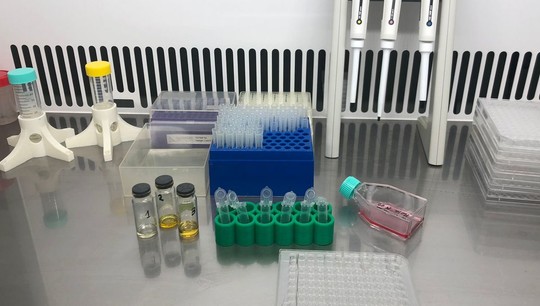Non-Toxic Substance Synthesized For Alzheimer’s Disease Treatment
The team of scientists from Russia has synthesized new promising substances for the treatment of Alzheimer’s disease. They are based on tacrine and salicylic acid. Scientists expect that the new substances can stop memory and attention disorders without serious side effects on other organs. The study was supported by the Russian Foundation for Basic Research (Project No. 19-53-26016a) and the Russian Ministry of Science and Higher Education (Projects No. AAA-A19-119011790134-1 and No. 22041400110-4). The results were published in Amyloids and Neurological Diseases.
“In Alzheimer’s disease, the neurons that secrete acetylcholine are destroyed. Its level in the cerebral cortex and subcortical structures becomes lower. This leads to various cognitive dysfunctions: memory impairment, attention deficit, and loss of basic practical skills. Tacrine blocks the enzyme acetylcholinesterase, thereby increasing the amount of the mediator acetylcholine. The drug was withdrawn from clinical use because of its high toxicity, especially to liver cells. The benefits of the treatment and the side effects negated each other. The person suffered from acute liver damage,” says study co-author Maria Ulitko, Director of the Department of Biology and Fundamental Medicine at the Ural Federal University.
Scientists are therefore selecting compounds that have the properties of tacrine but are safe for the body. One promising candidate is a tacrine-salicylic acid conjugate that has antioxidant properties in addition to its acetylcholinesterase inhibitory activity. They are also able to block the aggregation of β-amyloid, the deposition of which in brain cells blocks the work of neurons and leads to their death.
“Our task was to study the effects of the obtained tacrine and salicylic acid conjugates on liver cells. The main obstacle to the use of tacrine is its very strong hepatotoxicity. We have shown that most of the conjugates synthesized by our team are 1.5-4 times less toxic to liver cells than pure tacrine,” says Maria Ulitko.
The drug of the future is currently undergoing preclinical studies, in which scientists are further testing its properties. If the compounds make it through these early stages, they will be tested in human clinical trials. These studies will help determine whether the combination of tacrine and salicylic acid can slow the progression of the disease without toxic effects on the liver.
“The exact causes of Alzheimer’s disease are still not fully understood. The disease has a genetic component, so there is no way to completely cure it. However, with improvements in diagnostic tools, it is possible to detect the disease in its early stages. If you start taking the medication as early as possible, you can increase the amount of acetylcholine. This will delay the formation of large β-amyloid aggregates in the neurons for many years and protect the neurons themselves from oxidative stress. Then cognitive processes will be preserved and the individual will be able to continue their activities for a long time,” concludes Maria Ulitko.
Many scientists worked on the study. For example, chemists from the Postovsky Institute of Organic Synthesis of the Ural Branch of the Russian Academy of Sciences synthesized some of the substances and created conjugates of salicylic acid and tacrine. Specialists from the Institute of Physiologically Active Compounds of the Russian Academy of Sciences in Chernogolovka studied the substances for their inhibitory activity against acetylcholinesterase, antioxidant activity, and ability to prevent the formation of large β-amyloid protein plaques. Scientists from the Department of Biology and Basic Medicine at the UFU tested the newly synthesized substances for their toxicity to liver cells.

